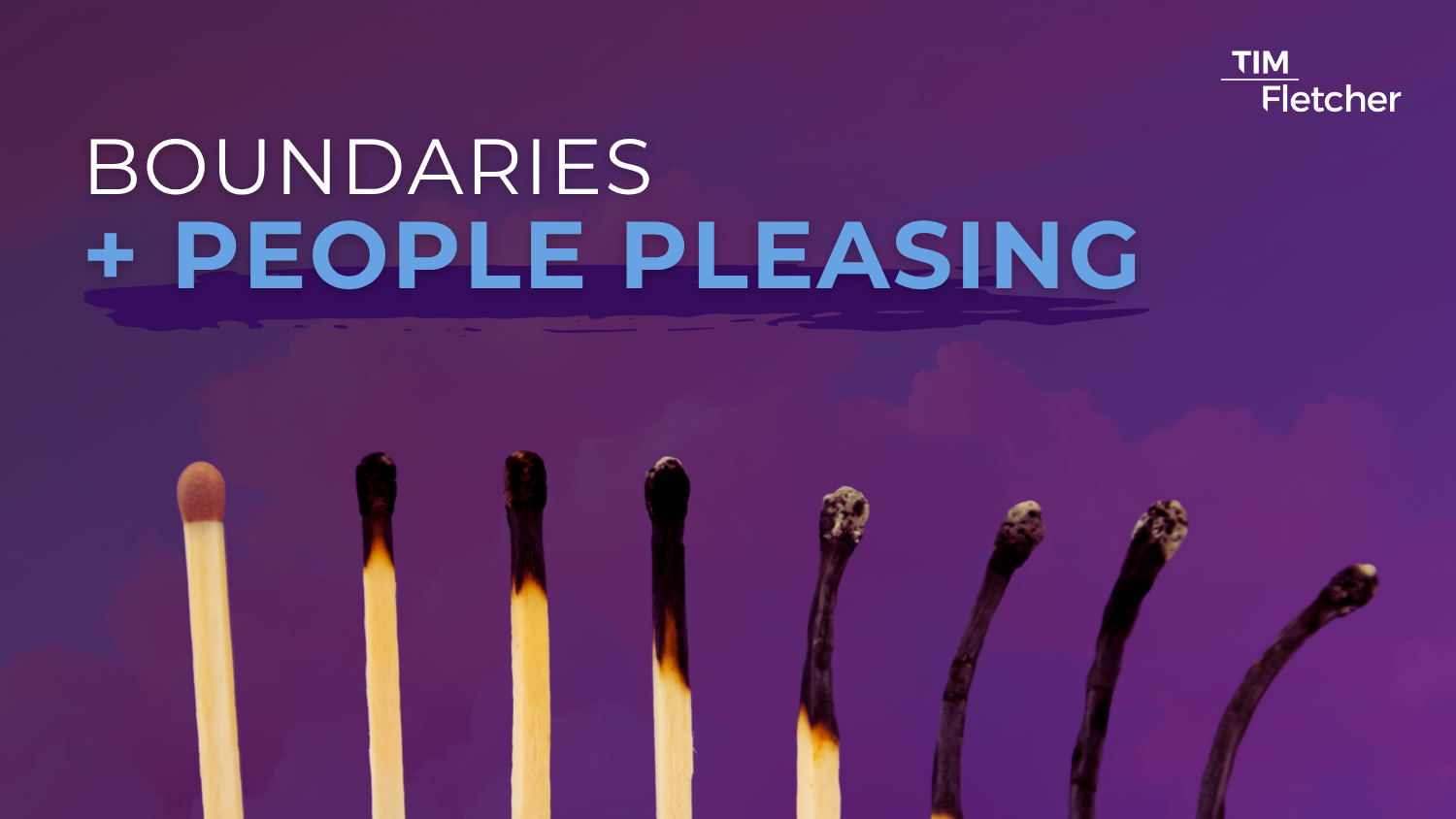How Does Complex Trauma Fuel Explosive Anger? Understanding the Roots of Rage
The Double-Edged Sword of Anger
"Anger never led to anything good—it only led to more pain."
At first glance, anger seems destructive. It ruins relationships, fuels regret, and leaves emotional scars. But what if anger wasn't meant to be destructive? What if, buried beneath years of pain, anger was originally designed to protect love?
Where does anger come from, and who and what are you actually mad at? In this clip from Tim's series on Anger and Complex Trauma, he covers how anger forms and the impact it can have on a person. Watch the video here
For those with complex trauma (C-PTSD), anger doesn't feel protective—it feels uncontrollable, explosive, and suffocating. A minor irritation triggers a volcanic reaction, leaving you (and those around you) stunned. Why do I react this way? Why can't I control it?
The answer lies in how complex trauma rewires anger's original purpose. Let's explore:
1. Anger's Original Design: A Guardian of Love
Anger wasn't meant to destroy—it was meant to restore.
We're born with an innate moral compass that recognizes love as:
- Honesty
- Reliability
- Respect
- Fairness
When these are violated (e.g., lies, betrayal, neglect), anger flares up as an alarm system:
- "Alert! This isn't right!"
- "This will damage the relationship if it continues!"
Healthy anger motivates repair:
- It pushes you to say, "We need to talk about this."
- It restores boundaries, truth, and safety.
But for trauma survivors, anger wasn't allowed to do its job.
2. How Complex Trauma Hijacks Anger
A. The Trauma Twist: When Anger Gets Trapped
As a child, you felt anger for valid reasons:
- Lies
- Broken promises
- Emotional neglect
- Unfair punishments
But if expressing anger led to more punishment or dismissal, you had two options:
1. Stuff it down → Suppressed rage turns into "lava" (seething, long-term resentment).
2. Vent it sideways → Bullying, self-harm, addiction, or explosive outbursts.
Example:
- A child who couldn't confront an abusive parent might kick the dog or break toys instead.
- An adult with unresolved trauma might snap at a coworker over a tiny mistake.
B. The Full Activation Trap
Trauma keeps the nervous system stuck in survival mode. That's why:
- A small annoyance (e.g., someone forgetting chores) feels like a massive betrayal.
- The reaction doesn't match the trigger—because your brain is still fighting past wounds.
Question to ask yourself:
"Is my anger really about this moment… or is it 20 years of unheard pain finally erupting?"
3. The Shame-Anger Cycle: Why Trauma Survivors Hate Themselves
Complex trauma's deepest wound? Shame.
- Instead of seeing yourself as worthy of love, trauma teaches:
- "I'm unlovable."
- "I'm too much."
- "I ruin everything."
Shame demands self-punishment, so anger turns inward:
- Self-criticism
- Self-sabotage
- Isolation
External anger (at partners, parents, God) often masks internal rage—the belief that you are the problem.
4. Breaking the Cycle: How to Restore Anger's Original Purpose
Step 1: Recognize Your "Lava"
- Where did I learn that anger = danger?
- What childhood injustices still burn inside me?
Step 2: Re-map Your Triggers
Next time you explode, ask:
- What old wound did this touch?
- Is this really about now, or is it about then?
Step 3: Channel Anger Into Healing (Not Destruction)
Healthy anger says:
- "I deserve better."
- "I will set boundaries."
- "I will protect myself—not punish others."
Example:
Instead of screaming at a partner for being late, you might say:
"When you're late, it triggers my fear of being unimportant. Can we talk about this?"
Anger Is Not Your Enemy—It's a Misdirected Ally
Anger, in its purest form, is a cry for justice. For trauma survivors, it's been weaponized against you—but it doesn't have to stay that way.
Your rage holds clues to your deepest needs:
- The need to be heard.
- The need for safety.
- The need to finally say, "What happened to me was wrong."
The goal isn't to eliminate anger—it's to help it return to its original purpose: protecting your heart, not destroying it.
You Might Also Like:
- "If You Leave Me, Can I Come Too?" – Codependency & Complex Trauma Explained
Question for Reflection:
"If my anger had a voice, what would it be trying to tell me?"
Your story isn't over. Your anger doesn't have to control you—it can guide you back to yourself.
Additional Resources to Support Your Journey
You don’t have to navigate this path alone. Explore these resources designed to support and empower you:
- ALIGN Courses: Practical, self-paced, trauma-informed tools to help you navigate recovery with clarity and confidence.
- Article: Read “Why Healing Your Relationship With Your Body Is the Key to Healing Everything Else | Complex Trauma” for actionable insights into overcoming trauma’s long-lasting effects.
LIFT Online Learning is designed for people who’ve tried everything… and still feel stuck.
It’s not about quick fixes. It’s about:
Understanding how trauma reshaped your brain (so you can reshape it back).
Practicing tools that actually work (not just "think positive!").
Healing in a way that sticks—because you deserve more than temporary relief.
The best part? You don’t have to figure it out alone.
Let’s begin—when you’re ready.































